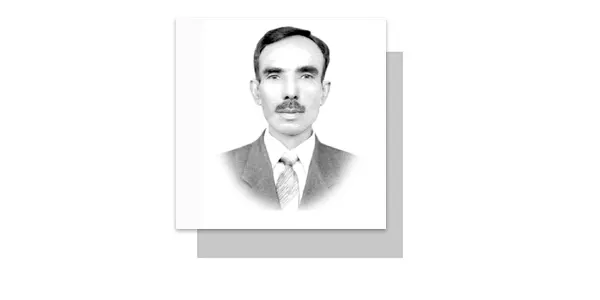EVERY year, Kashmir Martyrs’ Day (Youm-e-Shudaha-e-Kashmir) is commemorated on 13 July in the memory of 21 Kashmiris who were martyred outside Srinagar Central Jail by the troops of Dogra Maharaja on July 13, 1931. History of Dogra rule (1846-1947) in Kashmir is replete with tyrannous treatment, meted out to the Kashmiri Muslims by Dogra forces.
On 19 April 1931, the ban of Eid Khutba (Sermon) ignited widespread demonstrations in the Jammu city, followed by desecration of the Holy Quran at the hands of Dogra forces. In Srinagar, people gathered in Jamia Masjid to denounce this blasphemy. One such get-together was held in Khankah-e-Muella Srinagar, which was addressed by prominent Kashmiris. When the meeting was concluded, a youth, Abdul Qadeer, pointing his finger to the Maharaja’s palace, raised slogans “destroy its every brick.” With the accusation of sedition, he was arrested. Abdul Qadir was to be tried in the court, but due to large public resentment, the court was shifted to Central Jail Srinagar.
On 12 July 1931, in response to the shifting of court, intense public protests were held throughout the city. The next day, thousands of people thronged the Central Jail Srinagar to witness the in-camera trial of Abdul Qadeer. As the time for obligatory prayer approached, a young Kashmiri stood for Azan. The Dogra Governor, Ray Zada Tartilok Chand ordered soldiers to open fire at him. When he got martyred, another young man took his place and started Azan. He was also shot dead. In this way, 21 Kashmiris embraced martyrdom in their efforts to complete the Azan. The people carried the dead and paraded through the streets of Srinagar, chanting slogans against Dogra brutalities. Complete strike was observed in the city, which was followed by week-long mourning. This incident shook the whole state and the traffic from Srinagar to Rawalpindi and Srinagar to Jammu came to halt from 13 to 26 July 1931. The 21 martyrs are buried in Martyrs’ Graveyard at Khawaja Bazar, Srinagar.
After these brutal killings, the Kashmiri leadership realized the need to form a political party, Muslim Conference (MC) to wage struggle for their freedom. On July 19, 1947, MC passed a resolution to merge Kashmir with Pakistan. During the partition of the sub-continent, the people of the state of Jammu and Kashmir (J&K), which comprised Muslim majority, decided to join Pakistan. But, Dogra Raja, Sir Hari Singh, a Hindu, who was ruling over the J&K in collusion with the Indian Prime Minister Jawaharlal Nehru and Governor General Lord Mountbatten, joined India. The Radcliffe Boundary Award gave the Gurdaspur District—a majority Muslim area to India to provide a land route to the Indian forces to move into the J&K.
Indian forces invaded Srinagar on October, 27 1947 and forcibly occupied the J&K in utter violation of the partition plan. When Pakistan responded militarily, on December 31, 1947, India made an appeal to the UN Security Council to intervene and a ceasefire ultimately came into effect on January 01, 1949, following UN resolutions calling for a plebiscite in Kashmir. On February 5, 1964, India backed out of its commitment of holding plebiscite. Instead, Indian Parliament declared Kashmir – an integral part of the Indian Union. Since 1989, various forms of state terrorism have been part of a deliberate campaign by the Indian army and paramilitary forces against Muslim Kashmiris. It has been manifested in various ruthless tactics.
On August 5, 2019, Indian PM Narendra Modi – leader of the BJP-led extremist government, revoked Articles 35-A and 370 of the Constitution which gave a special status to the disputed territory of the IIOJK. Indian government bifurcated Jammu and Kashmir into two union territories—Jammu and Kashmir and Ladakh to be ruled by the federal government. On the same day, strict military lockdown was imposed in the IIOJK which continues unabated.
While, the deployment of more than 900,000 military troops in the IIOJK, who have martyred tens of thousands of the Kashmiris—Modi-led regime has intensified measures, bringing ethno-demographic changes in the IIOJK to convert Muslim Kashmiris into minority. Western media, human rights groups and leaders of various countries and UNO have repeatedly condemned Indian illegal measures and human rights abuses which keep on going in the IIOJK. Despite it, Indian PM Modi sworn in as India’s prime minister on June 9, this year for a rare third term. BJP, together with its National Democratic Alliance (NDA), has won a majority.
Meanwhile, at least 10 people have been killed and 33 after a bus carrying Hindu pilgrims in the IIOJK was attacked by the Kashmiri freedom fighters. Most of the Indian media entities allegedly blamed Pakistan for the assault on the bus. Modi can arrange another false flag operation like Pulwama attack inside Pakistan’s sector of Kashmir to keep his coalition (NDA) united, and to divert attention from his weak government. Nonetheless, the Kashmir Martyrs’ Day gives a greater impetus to the Kashmiri freedom fighters, who continue their struggle, demanding their legitimate right of self-determination, as recognized by the UN resolutions.
—The writer is contributing columnist, based in Lahore.










